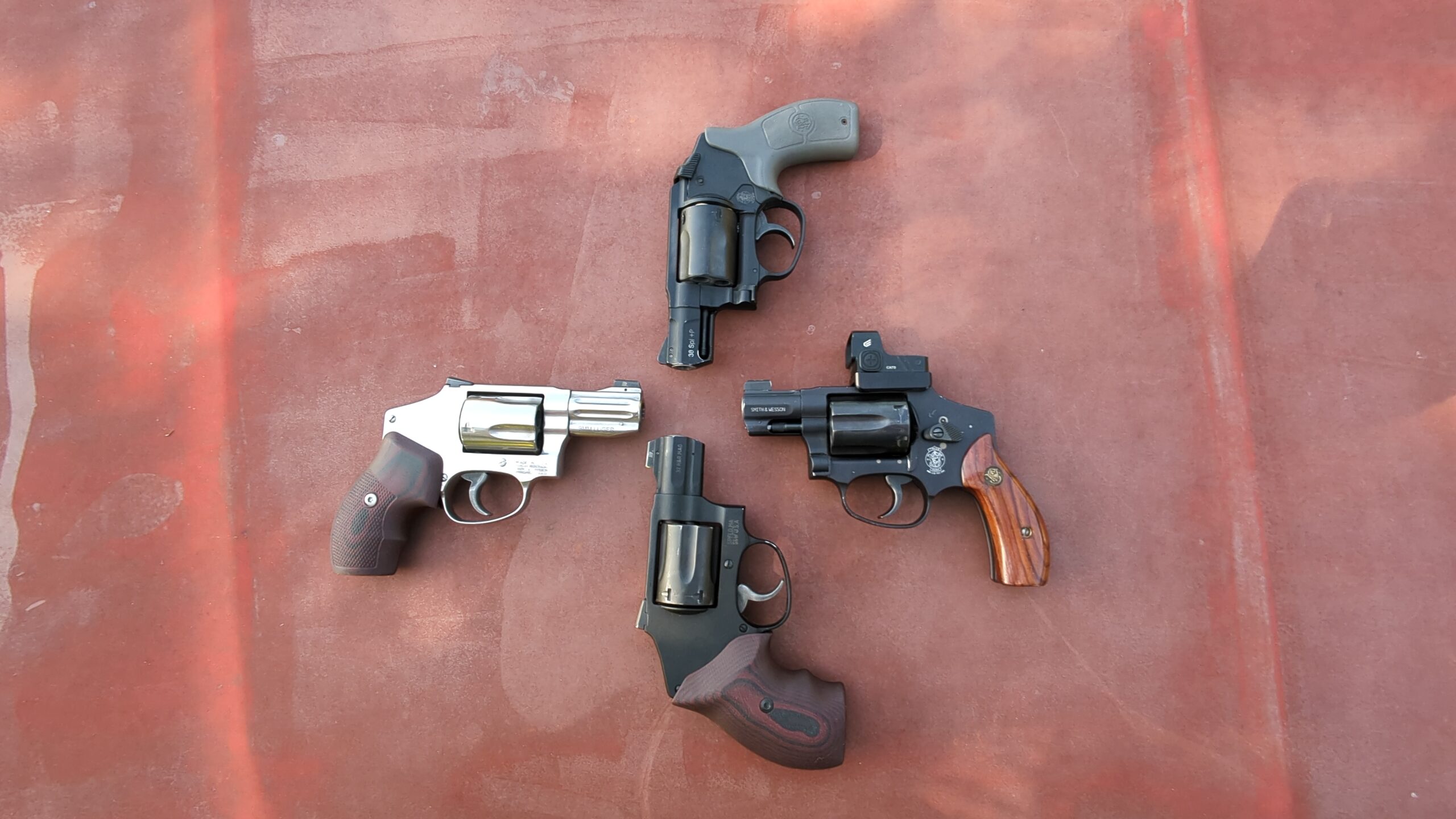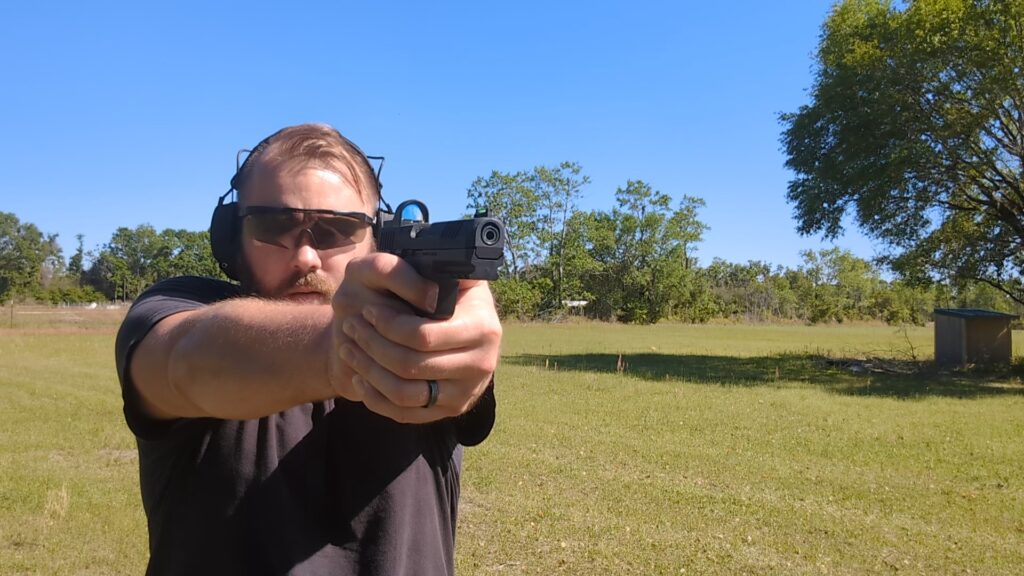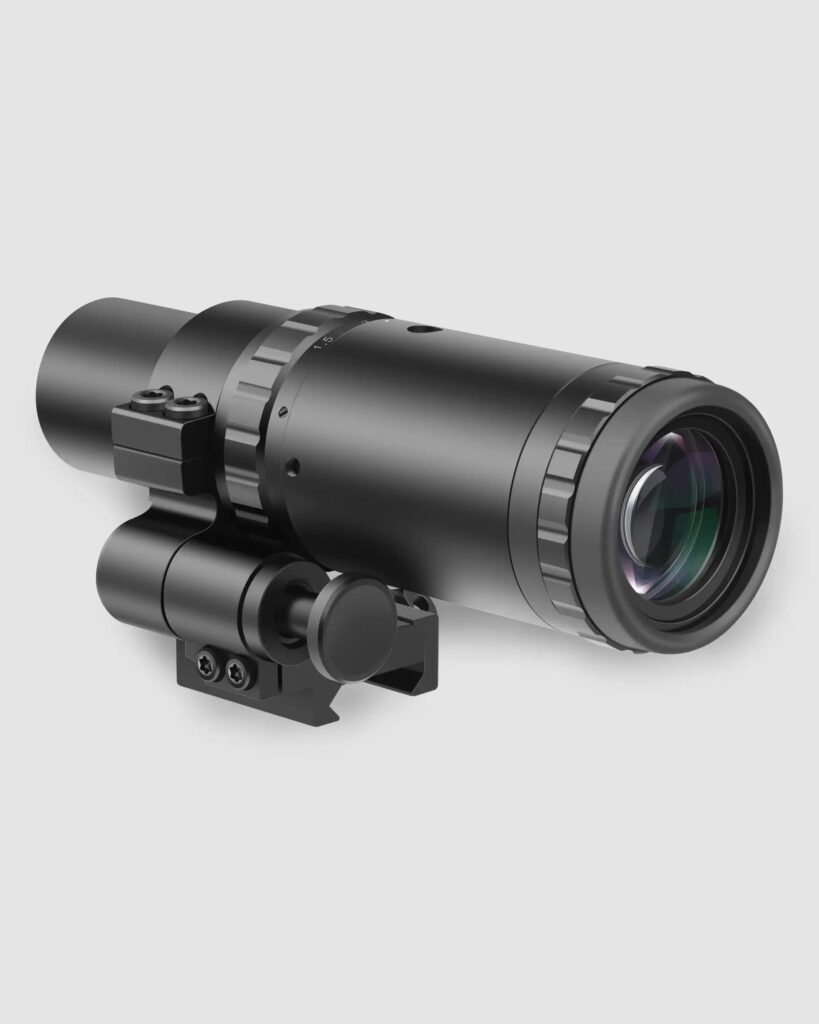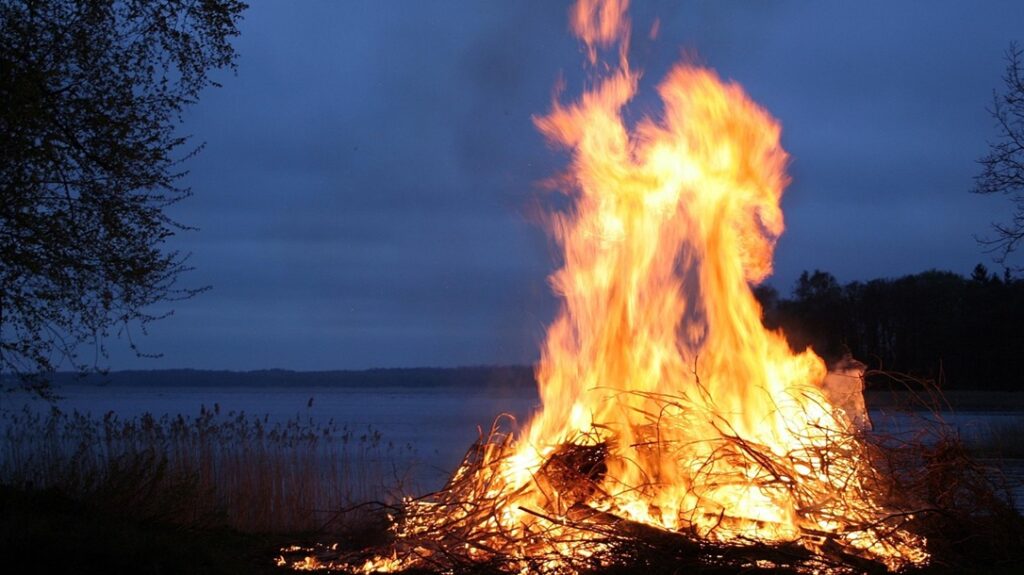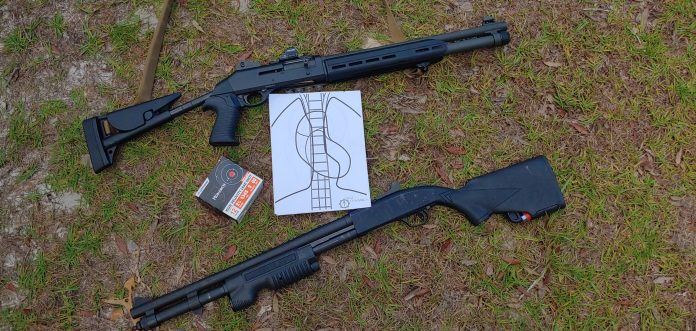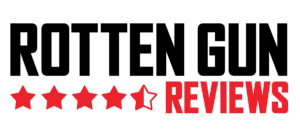Snub-nose revolvers aren’t meant to be precision weapons. Their short barrels, short sight radius, and double-action triggers can make accurate shooting difficult. Growing up, I often saw them referred to as “get off me guns” or “belly guns,” implying their use was at close to point-blank range. As a dedicated revolver enthusiast, but admittedly amateur revolver shooter, I was curious how far a snub-nose revolver could effectively make hits.
The Snub-Nose at Distance
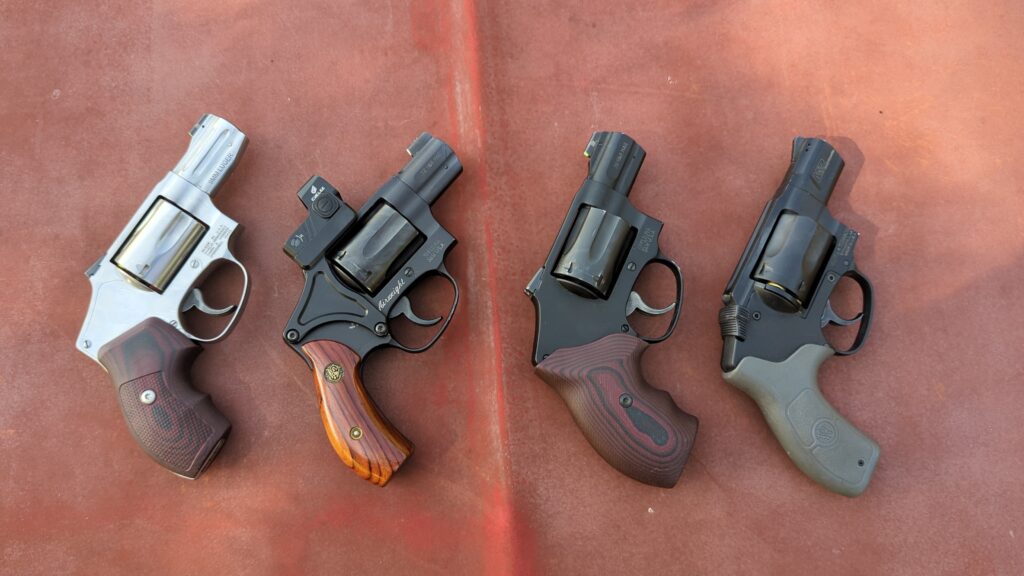
I’m not an expert or a particularly good shooter in general. With those qualifications, I think I’m a good choice to approach the subject. Namely, because most people aren’t experts and aren’t revolver masters. Skill level plays a huge role in your ability to make hits, but most of us aren’t going to shoot like Caleb Giddings or Darryl Bolke.
Advertisement — Continue Reading Below
I grabbed a few of my dedicated snub-nose revolvers to figure out how far I could shoot and what played a role in my ability to make hits beyond point-blank.
The Factors
My revolvers of choice were a S&W 940, a S&W 432 PD, a S&W 432 UC, and a S&W Bodyguard .38. Yep, all S&W’s to avoid some kind of company bias. Plus, S&W is the name in snub-nose revolvers with their famed J-Frame.
These guns represent several different configurations and several calibers. I started shooting at seven yards, 15, 25, and eventually 50 yards.
Advertisement — Continue Reading Below
The testing consisted of shooting five-round groups at each range. At 7, 15, and 25 yards, my target was an eight-inch circle. Think of it as a “bitchmade B8” because the scoring rings make me crack under pressure. At 50 yards, my target was an IPSC-sized steel target.
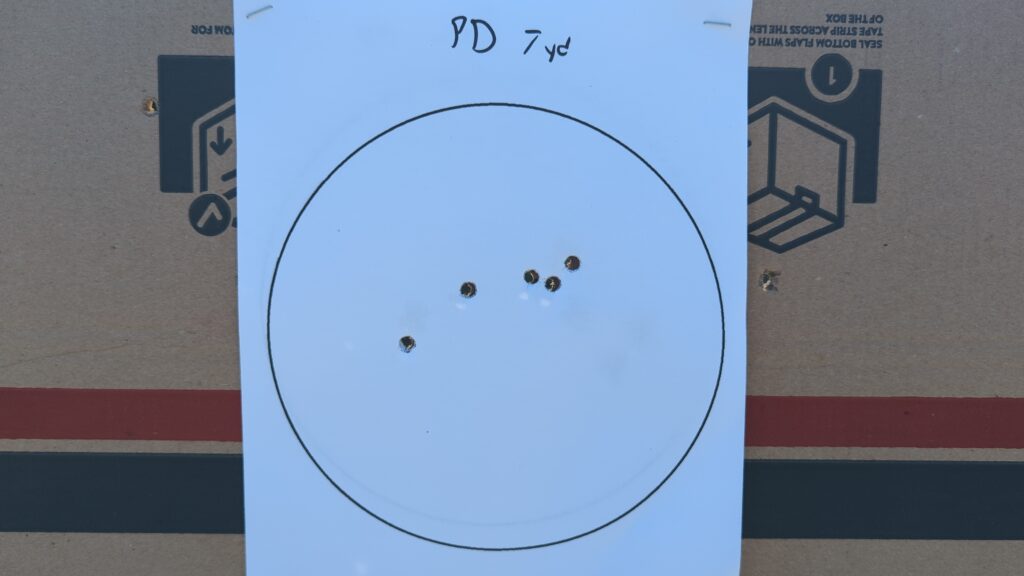
At 50 yards, any extra ammo I had was spent trying to shoot again and again to see what I could do.
Advertisement — Continue Reading Below
I don’t think my discoveries are going to be all that controversial, but I found several different factors contributed to my ability to make hits.
Skill Level
Skill is going to be a big factor in any shooting. I guarantee that an experienced revolver shooter can pick up a barebones .38 Special snub-nose, like the Bodyguard, and make hits at 50 yards all day. Since I picked up revolvers, I’ve seen my own skill grow significantly, and I’ve seen drastic increases in accuracy and decreases in group size. Skill and practice are going to be the most important factors in making long-range hits.
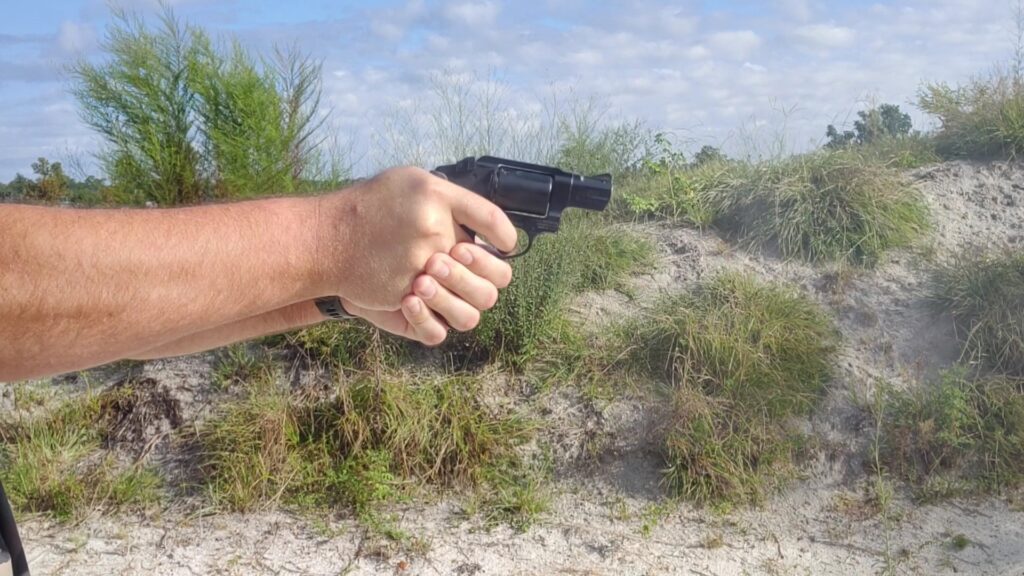
Advertisement — Continue Reading Below
Sighting System
Sights were the second most important factor. The Bodyguard has the traditional revolver sighting system. It’s a front sight you have to align with a trench in the center of the top strap. For me, this was the worst system for making hits. I struggled to land five rounds into an eight-inch circle at seven yards and settled for four out of five.
The Bodyguard and S&W 940 are very similar. They both feature small grips and short barrels. The biggest difference is that the S&W 940 features a dovetail rear sight and an XS front sight. Within 15 yards, the 940 was on paper, and at 25 yards, I got all five rounds on paper, but just barely.

Advertisement — Continue Reading Below
Out to 50 yards, I landed two out of five on the IPSC-sized target with the 940. With the simple sights of the Bodyguard, I was lucky to land one at 50 yards, and my groups at 25 yards were made up of two shots at best.
I achieved impressive accuracy with the 432 UC at 7, 15, and 25 yards, and at 50 yards, I did hit the target three times, once, which was more luck than anything.
The S&W 432 PD had a red dot mounted via the Shield Arms ROC. I consistently landed all my hits on paper at 25 yards, but outside of the 8-inch circle target, and four out of five at fifty yards. I loaded the gun with six rounds and hit five out of six shots. A red dot is a bit like a cheat code for long-range shooting. The red dot was also the fastest option for accurate shooting.
Advertisement — Continue Reading Below
Sights made the second biggest difference, and the biggest equipment difference.
Trigger
The trigger can make a big difference with small guns, namely, because the heavier trigger pull can make it tough to keep a good, consistent grip on the gun. The trigger pull of the UC is fantastic and a big reason why I think it made such an accurate gun within 25 yards. The 940 trigger isn’t bad, and the 432 PD is average. The Bodyguard’s trigger just sucks.
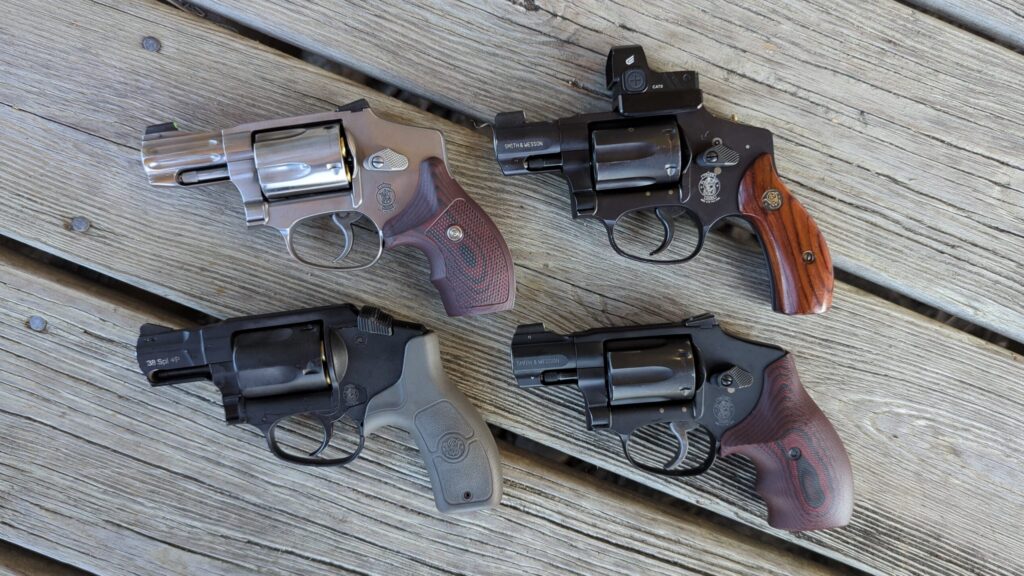
Advertisement — Continue Reading Below
A smooth trigger makes it a little easier to shoot the gun without sacrificing your grip. Speaking of, grip size makes a difference.
Grip Size
Snub-nose revolvers famously have tiny and thin grips. The 432 PD, the Bodyguard, and the 940 all have tiny grips, and they all kind of suck for control purposes, but excel for concealment purposes. Small grips are necessary for pocket carry or ankle carry, which are roles snub-nose revolvers excel at.
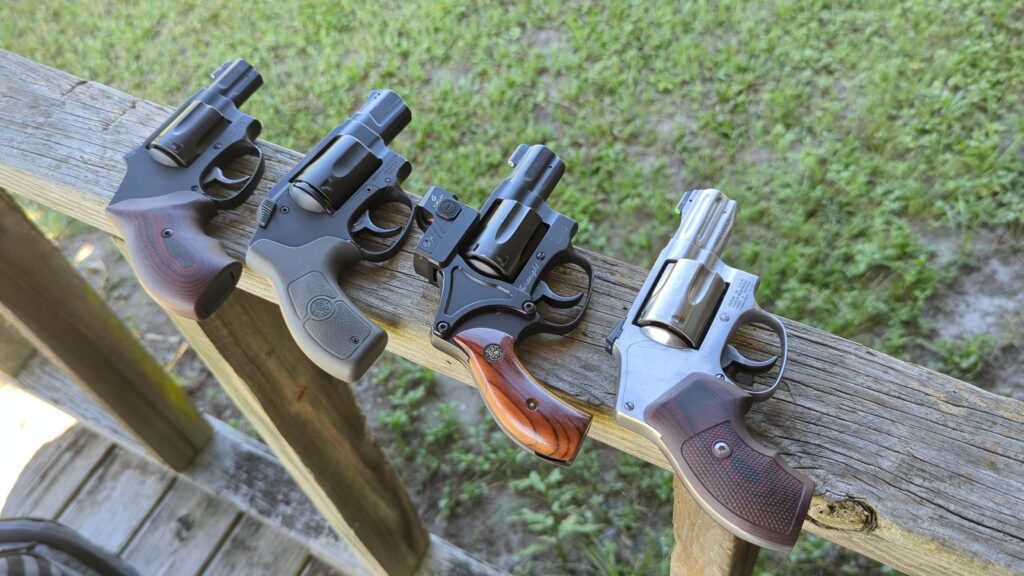
Advertisement — Continue Reading Below
The 432 UC has High Horn grips, which give you a lot more gun to grip. This made the gun easier to shoot accurately and consistently. I could punch very tight paper groups at seven yards and kept four out of five in an 8-inch circle at 15 yards. I made a great group at 25 yards, better than the red dot-equipped 432 PD. Inside of 25 yards, the grips seem to make more of a difference than the sights.
The High Horn grips allowed me to hit the target at 50 yards quickly and effectively. The accuracy was typically two rounds out of five, with a rare three out of five. I could also do it a little quicker, thanks to less felt recoil due to the larger grips.
Caliber
Snub-nose revolvers aren’t the easiest guns to handle. They tend to have somewhat snappy recoil that’s tough to mitigate. Recoil affects accuracy when it comes to repeated shots on target. The Bodyguard’s .38 Special recoil didn’t do it any favors at 25 yards, or even at 15 yards.
The 940 features super small grips and fires a 9mm round, which has about the same recoil as a .38 Special. While the sights helped me hit the target, the small grips made it tough for me to hit targets quickly and accurately.
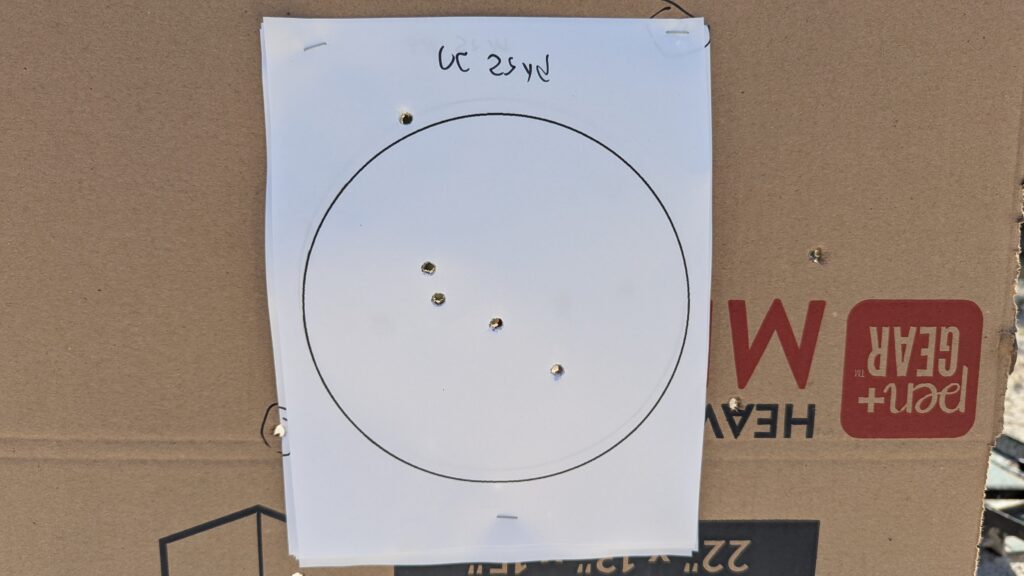
The 432 PD and 432 UC fire the .32 H&R Magnum, which has less recoil. This made it easier to shoot quick drills at all ranges. The 432 UC even delivered a 2.07 Bill Drill (after a few warm-up runs). The lower recoil makes a big difference for consistent accuracy after round one is fired.
It seems like the best combination would be the 432PD with a red dot and High Horn grips.
I combined the two, or sort of. The High Horn grips wouldn’t fit with the ROC mount. I held them together with my hands and found it to be a capable combination. My next goal is getting a pair of High Horn grips and trimming them to fit the 432 with the ROC and red dot.
Shooting Straight With a Snub-Nose
Remember, I’m no expert; these are the findings of a subject matter enthusiast at best. As a normal guy, these were the differences I found as an average revolver shooter. I think sights are the most important factor for longer-range shooting, but good grips were more important at 25 yards and in. Caliber makes it easy to hit a target repeatedly without grip adjustment.
This is what I discovered. What do you think? I’m willing to accept that my ideas are incorrect, but I think I might be on the money, at least for my shooting performance.
